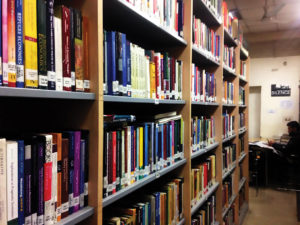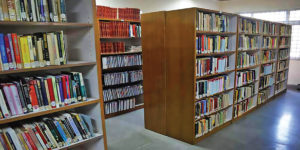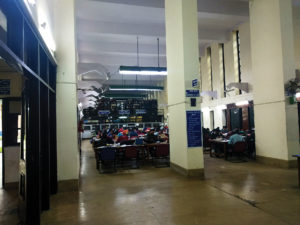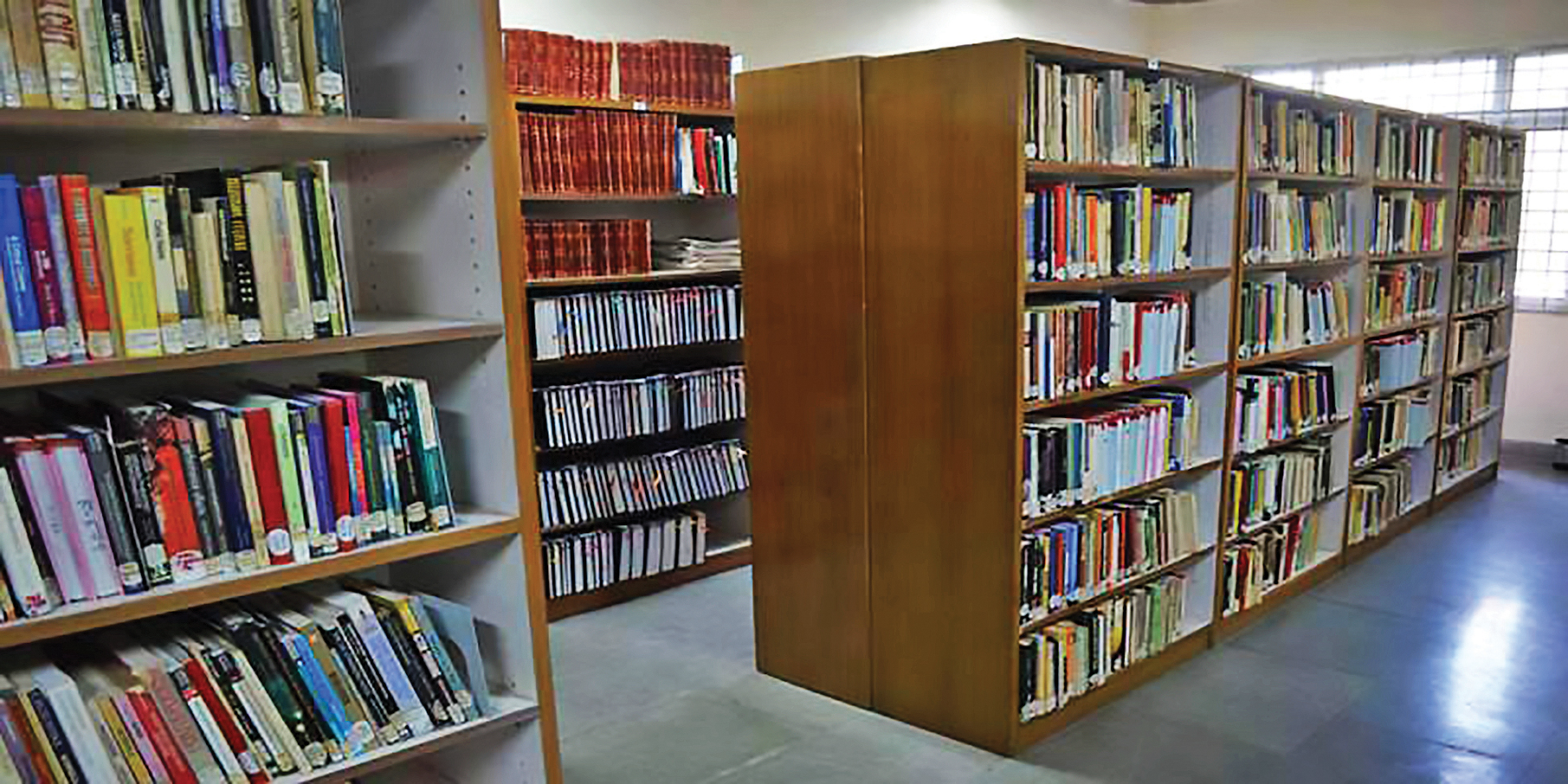Shubham Bhatia visits three campus libraries around Delhi to see whether students are being well served and whether they are using the facilities
Ambedkar University library

Situated inside the 16-acre Kashmere Gate campus of Ambedkar University, this library oozes old world charm, just like the campus. Next to the gate, you have to deposit your bag before entering.
Inside, the first sight that greets you is some 18-20 cubicles with computer systems, which is confusing, as it looks like a computer lab.
However, after you walk through and take a right, racks filled with books on Marxism, Modernism and others greet you with open arms.
Manju, a junior executive, sitting in a tiny room, says, “The library has about 55,000 books and the collection is loved by the students.” In fact, this campus boasts the biggest collection of books, much more than the Karampura and Lodhi Road campuses.
Although the library faces a space crunch, the collection of the books makes up for it. While students can get general books issued, Manju says that reference books are meant to be read in the library only.
New books are added only when the faculty recommends them. One distinct service of the library is that a book issued from one of its campuses can be returned to the others. “One doesn’t need to go to the same campus in order to return the book,” says Manju.
While the undergraduate students have to return a book in a period of 15 days, the PhD students enjoy a privilege of three months. And if one needs to read a book on one of the computer systems, then 120 e-books are at their service.
Bharati Kondepudy, 21, pursuing a Master’s degree in Development Studies says, “The library staff is quite helpful and the collection of books is good. The library catalogue is available online.”
However, she has a complaint: “absolute lack of space.” She says that the seating area is “terribly small” and the “library is generally full.” PhD scholars have two cubicles reserved for them in the library, “but then it cuts into the already limited space meant for students.”
The issue according to Kondepudy has been raised by students in the past, and recently too by PhD scholars who don’t have enough space to work in the library.
She also adds that since it’s not an open library, she cannot bring her own books inside, thus she prefers not to work in the library.
JNU library

Established in 1969, the library has stock of the Indian School of International Studies, which was affiliated to Delhi University till it was merged with JNU. Today, the JNU library — Dr BR Ambedkar Central Library — is also the tallest building on campus with more than 5 lakh books and about 1 lakh e-books.
Since only students are allowed to enter the library, Patriot could not explore the library from inside. For students too, there are restrictions: the new rule is that no student can bring his/her own book to the library to read.
There is a 13-member strong staff for the library which includes a university librarian, deputy librarians (three), assistant librarians (10), professional assistants (22) as per the information available on the University’s official website.
In November last year, a tussle took place between the university administration and students when news poured in of funds being cut for the library.
While the administration denied the allegation completely, the JNUSU (student’s union) claims that the university has slashed funds from Rs 8 crore to Rs 1.7 crore. The reason being given is that the University Grants Commission refused to release funds.
This, the concerned students say, will affect research in a huge way. The university administration also sent notices to the four students’ union members, including JNUSU president N Sai Balaji for allegedly forcibly entering the library with a book titled The Resistible Rise of Adolf Hitler – A view from Modi’s India.
Amrit Raj, an MPhil student says, “Funds were drastically cut during the university’s budget for 2018-19 and access was denied to some articles in JSTOR and SEG journals. They’ve also cut down budgets department-wise. Each department used to get a specific budget which is some Rs 4 lakh and that too is cut down.”
“The reading room in the library was constructed during the tenure of the current Vice-Chancellor, that too got shut down. They said that the fire exits are not there. Didn’t they know it when they were constructing the reading room?” Asks Raj.
Another source told Patriot that there’s a discrimination on the grounds of departments too. “For example, the science students are seen as harmless. They will get access to their choice of articles and books because the administration thinks that they will not do anything against the college, while the students of humanities courses are assumed as harmful,” the source said.
Delhi University’s Central Library

Located in the varsity’s North Campus, the central library established in 1957 is a place for thousands of students of different colleges. The passage to the plethora of book racks seems like a still from a movie. The library’s collection has books from all categories like Democracy, Public Administration, History, Modernism, Human Rights and Political Science.
The librarian was not on duty when Patriot visited the library. The person in charge said, “I’m not authorised to speak about the library.”
The reading area is huge, and gives a feeling of old school libraries, with lights hanging from the double ceiling.
Students stream in with notebooks in their hands and also use the library as a meeting point for conversations. Quite a few students, when asked about the library, gave a standard reply: “I’m not a regular here.”
However, Rigzen Gurmat, a student of Faculty of Arts, spoke at length about the library. He says, “Since I’m currently researching in the area of different sections of Buddhism and Tibetan culture, those books remain untouched by other students, and that’s a good thing.”
He says some books feel like they’re 50 years old, but remain in top-notch condition because “Nobody is interested to read them. They’re meant to be used as reference for research only.”
He also says that he senses “judgemental looks” whenever he enters/exits the library from the guard, because of his looks.
According to him, the section reserved for MPhil students is quite congested. But, the main area of concern, Gurmat says, is “Lots of students who are preparing for UPSC exam come from outside and start occupying the space since 8 am. So if you really need a place to sit in the library then you have to come early in the morning.”
Sahaj Parikh, an MA History student of Hindu College also points out the same concern. “Some students who are enrolled in different colleges study in the library for UPSC exams. That’s not right.”
He adds that the library has a really good collection of books and has everything a student needs for studies or research.





